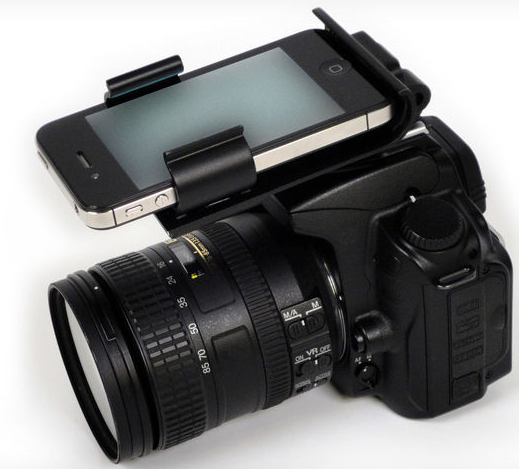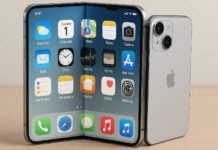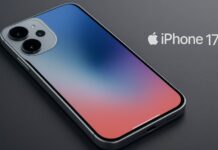Daca sunteti fotograf si aveti o camera DSLR acasa atunci s-ar putea sa va intereseze accesoriul FlashDock care va permite sa atasati un smartphone camerei voastre. Inainte sa va entuziasmati prea tare va anunt ca acest dock nu va permite sa conectati iPhone-ul direct la camera ci va permite doar sa il sprijiniti pe ea. Cele doua dispozitive nu interactioneaza in vreun fel iar dock-ul a fost conceput doar pentru a oferi utilizatorilor posibilitatea de a folosi anumite aplicatii de pe smartphone care ar fi utile in procesul de inregistrare a pozelor. Mai exact producatorii mizeaza pe geotagging si aplicatii care calculeaza depth of field-ul, aplicatii care monitorizeaza vibratiile si multe altele.
FlashDock este practic un accesoriu ornamental si prea putin util, as spune eu, pentru ca practic nu imbunatateste dramatic capacitatea de a face poze si nu se conecteaza la camera voastra. Partea buna este ca FlashDock este disponibil pentru numai 35$ pe site-ul producatorului insa este compatibil doar cu anumite modele de camere DSLR.
- Geotagging with .GPX files: SmartPhones have a built-in GPS and most DSLR don’t. SmartPhones can record tracks into a file called a “GPX file”. That file is then read by iPhoto, Aperture, Lightroom, Photoshop Elements, Picasa and most photo library softwares. What these softwares do is, merge this GPS data with the metadata of pictures taken during the photo-shoot. It is simple and free.
- Geotagging with bluetooth: Some add-on devices like the BlueSLR are plugged into the DSLR GPS connector. Since SmartPhones also have a bluetooth connection, they can send in real-time location information to the camera that in turn will geotag pictures. It works the same way as if there was a GPS receiver plugged into the DSLR, only cheaper.
- LightMeter: SmartPhones have cameras and light sensors. Both combined, some smart developers have managed to create Light Meters that perform very well. They do require a calibration with a real light meter, but passed this stage, all the fotographer needs is a SmartPhone.
- Depth Of Field calculator: These apps let the DSLR user calculate precisely the sharp area before and after the subject. These calculators take into account the lens type, the camera model and aperture to give a very precise value.
- Level: Photographers have used levels for years on their tripods and now some DSLR feature an electronic horizontal line. However, some cameras do not have this feature and people can now monitor a level even without a tripod. Typical accelerometers inside the SmartPhones have an accuracy of 0.1°, more than enough for a level functionality.
- Microphone: The latest DSLRs all have video functionalities. However, the sound is often not in par with the video quality. SmartPhones on the other hand are made to deliver good sound quality with ambient noise cancellation and remote recording. Another good exemple of combining DSLR and SmartPhones.
- Vibrations monitoring: What sort of vibrations does the shutter bring on a DSLR? With Seismometers apps, photographers can visually see and record the vibrations brought by their set up and correct it until pictures are taken completely still.































